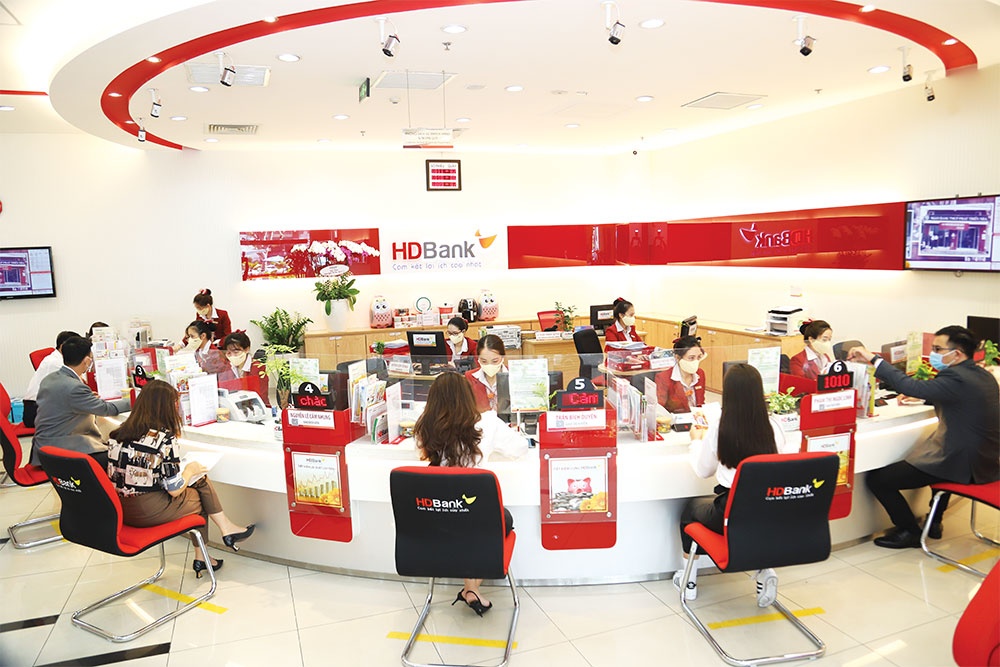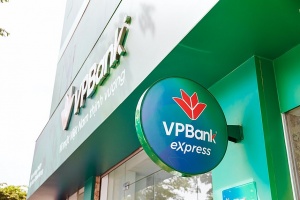Banking activities paying off through third-quarter progress
As a result of a solid asset quality base and a multitude of non-credit business revenue streams, banks continue to have a favourable outlook. In the immediate term, according to VNDirect, banks face a number of issues including growing capital costs, as global interest rates continue to climb and expansion potential remains restricted due to inflationary worries.
 |
| Banking activities paying off through third-quarter progress, Photo Le Toan |
Tran Thi Khanh Hien, director of VNDirect’s research section, said that banks’ recoupment gains often occur in the fourth quarter. However, unlike in previous years, third-quarter earnings this year may be more impressive.
“According to our estimates, it is anticipated that the net revenues of the biggest banks – such as Vietcombank, VPBank, ACB, and others – will continue to increase by almost 40 per cent in the third quarter of 2022 compared to that of 2021.
A director of a TPBank branch told VIR that one of the reasons for the likely positive business results in the third quarter, and year so far, was that the bank’s leaders had been promoting the creditworthiness balance since April when authorities aimed to stiffen supervision of the issuance of corporate bonds.
By the end of the second quarter of 2022, VIB had the biggest share of personal loans in the system, reaching 89 per cent. The personal loan balance at VIB climbed by around 13 per cent during the first half of 2022. With an annual compound growth rate of 28 per cent for total assets and 62 per cent for net profit over the past five years as a result of the effective implementation of this business model, VIB has witnessed significant growth.
The second bank with a large percentage of personal loans is ACB, with an approximate 64 per cent share as of July. Furthermore, it increased lending to small- and medium-sized enterprises (SMEs) by approximately 31 per cent. This bank’s retail section accounted for 94 per cent of its total loans. ACB holds around 18 per cent of outstanding loans in the real estate industry, the majority of which are housing loans.
Meanwhile, the credit amount at VPBank’s parent bank climbed by 14.3 per cent to over $14.8 billion during the first half of the year, with a significant contribution from the strategic category of individuals and SMEs. The percentage climbed from 56.9 per cent in June 2021 to 61 per cent at the end of June this year as a result of a 33 per cent rise in disbursement sales in the first six months of these two sectors over the same time.
In the second quarter of 2022, TPBank lowered its corporate bond holdings by $180 million while increasing its personal loans. According to VNDirect’s projections, TPBank’s percentage of personal loans to total credit jumped significantly to 59.1 per cent in June.
“In the setting of a relatively tight market, banks still have their own speciality to handle problems, so the phrase ‘any port in a storm’ may be an exaggeration, but it also reflects the actual situation,” the director of the TPBank branch said.
According to recently-released survey findings by the Monetary Forecasting and Statistics Department of the State Bank of Vietnam (SBV), the business position of the banking system in the third quarter of 2022 was better than anticipated. Around 70-76 per cent of credit institutions anticipate that their business will improve in the following quarter and for the whole year of 2022. In terms of pre-tax profit in 2022, 88.3 per cent of credit institutions anticipate a positive increase over 2021; 6.8 per cent anticipate negative profit growth in 2022; and 4.9 per cent anticipate stable profit growth.
According to Nguyen Quoc Hung, general secretary of the Vietnam Banks Association, to succeed in the retail banking competition, digital technology is crucial as it helps the bank grow its market and enhance its customer service capabilities. “In addition, a number of large banks, including VPBank, Techcombank, MB, and HDBank, underwent digital transformation early on and received highly positive results, therefore adding to the banks’ profit growth,” Hung explained.
According to a VBA research study in May, 95 per cent of banks and lending institutions have developed a digital strategic plan and are actively recruiting and training personnel who master 4.0 technologies such as the cloud and big data analysis in order to digitise, enhance the technology system, and offer products and services via the digital system.
Jens Lottner, CEO of Techcombank, stated that when the bank began its new digitalisation journey around two years ago, it had 450-500 personnel in the technical department. By the end of this year, that number will increase to 1,300 to 1,400
Techcombank established project teams comprised of cross-functional employees from a variety of disciplines, including business, technical, marketing, and legal, and these teams are required to solve challenges jointly, since one individual cannot supply a complete answer.
“Therefore, for the governance structure, we still have all the business blocks like a typical bank but probably around 1,000 people who are working really hard on these multi-functional projects,” Lottner said.
 | Credit growth cap remains indispensable for macroeconomic stability Businesses have faced difficulties in access to capital and commercial banks want to be able to lend freely to meet market demand. However, experts said the imposition of the credit growth cap is still necessary to keep the country’s macro economy stable in the short run. |
 | Four banks have adjusted credit room The State Bank of Vietnam (SBV) has officially adjusted the credit room for four banks in a bid to support weak credit institutions according to the government's policy. |
What the stars mean:
★ Poor ★ ★ Promising ★★★ Good ★★★★ Very good ★★★★★ Exceptional
 Tag:
Tag:
Related Contents
Latest News
More News
- Stock market posts resilient 2025 performance (December 19, 2025 | 18:17)
- Citi Vietnam receives 2025 AmCham CSR recognition (December 19, 2025 | 16:35)
- As global green supply chain reshapes, will Vietnam be left behind? (December 19, 2025 | 08:00)
- Banks gear up for massive capital increases (December 18, 2025 | 17:04)
- Securing capital and efficiency for Vietnam’s 2026-2030 growth ambitions (December 17, 2025 | 10:00)
- Energy sector in need of blended finance mechanisms (December 17, 2025 | 09:00)
- Vietnam still has room to mobilise capital for sustainable growth (December 17, 2025 | 08:57)
- Long-term capital seen as key hurdle to green growth (December 16, 2025 | 08:00)
- Gold prices swing amid tax debate and import uncertainty (December 15, 2025 | 18:04)
- Agribank frames bank credit as catalyst for green growth (December 15, 2025 | 17:59)






















 Mobile Version
Mobile Version